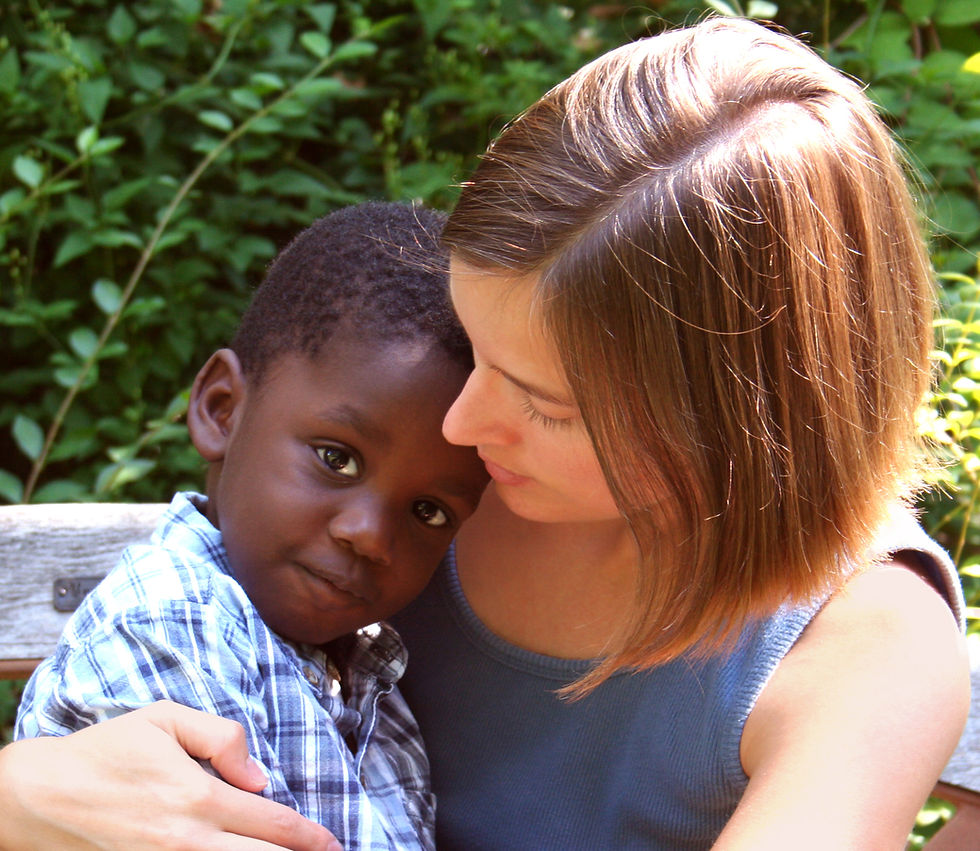Parenting A Child With Sensory Deficits (part 2) . . .
- Dr. Mark Andrews

- Dec 2, 2024
- 3 min read
Updated: Dec 3, 2024

In my previous blog I shared some introductory information about sensory deficits experienced by foster and adopted children. Research clearly shows that children in care experience sensory challenges at a significantly higher frequency than children in traditional/biological home settings. Let’s take a look at two children in foster care who display sensory challenges-- ‘Sabrina” and “Charles”. We will also explore how these children can be helped to deal with their challenges.
Sabrina is six years old, coming into foster care for the first time. Her biological grandmother previously had custody of Sabrina, but can no longer care for her due to grandmom’s serious health issues. She describes Sabrina as “always having been very picky and fussy about a lot of things—she was a very cranky baby.” It didn’t take long for Sabrina’s foster parents to learn the scope of what her grandmother meant by “fussy and picky.” Sabrina refuses to eat anything besides bread, chicken strips and soft desserts like Jello and pudding; and it’s a big “NO” on leafy vegetables. She also doesn’t like food that in her estimation is “too hot”, even though her foster Mom only warms it to a moderate level. She constantly chews on the sleeves and collars of her clothing. She refuses to wear hoodies and jackets in cold weather--“I can’t stand how they feel on me!!”, Sabrina exclaims.
Now let’s look at Charles, age eight. Charles is in third grade. He loves to talk, laughs easily and loves to give and receive hugs. The problem is, that’s mostly all Charles enjoys doing—talking, laughing and hugging—especially hugging. He can’t keep his hands off the other children. He’s constantly in their space, constantly running into them and wanting to wrestle them on the playground. He’s been branded as a “bully” because he’s bigger than most all kids his age. Charles is the same way at home with his six-year-old sister and four-year-old brother. His foster mom shares, “Charles doesn’t know his own strength, and when his siblings don’t want to wrestle with him, he still wants to bump into them and push them around. He even likes to sneak up behind me and grab me in this big bear hug. I’m not much bigger than him and I have to tell him ‘Charles, stop, you’re hurting me and squeezing me too tight!!’” Along with his “over
physical-ness” Charles is also described as quite clumsy at home, bumping into walls and doors.. “It’s almost like he enjoys running onto things”, exclaims his foster Dad.
How can Sabrina & Charles’s caregivers address their sensory challenges?
For both children, their foster parents can ask their caseworker to set up an assessment with an Occupational Therapist. These professionals specialize in working with, and providing solutions for kids who have sensory challenges.
For a boy like Charles, his parents can provide sensory-seeker options like a weighted blanket for his bed, teach him to do “wall push-ups” (pushing against a wall), going to a climbing wall, making things out of Play-Dough or Legos (which provide positive sensory pressure for the hands), and although controversial to some parents, possibly even playing pee-wee football.
For a girl like Sabrina, her parents can encourage (not force) her to try new foods in very small portions. Her aversion to certain foods may be due to her never having tried them before; although it may also be indictive of a sensory issue. For her aversion to wearing hoodies or coats in cooler weather, her parents can make sure these items of clothing have no irritating tags in them; but can also encourage her to dress in “layers” of heavier long-sleeve shirts or pullover sweaters. With her sensitivity to food that is “too hot” Sabrina’s parents can assist her to warm her food in a microwave to her liking.
Finally, for both children, their foster parents need to be patient—understanding that for both Sabrina and Charles, their sensory aversion and sensory seeking may be much more than unacceptable behavior. Again, the parents need to continually look for their children’s ongoing patterns of these behaviors, which will help determine what is sensory-related and what is simply behaviorally-related.
In my next installment, I’ll share more specifics on how different therapies and activities can help children with sensory challenges . . .





Comments